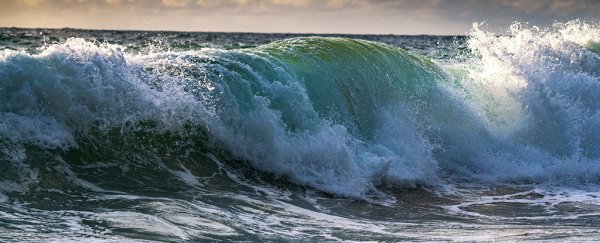Seconds count when it comes to tsunami alerts, and scientists may have found a warning sign that can be detected even earlier than sea level rises: the magnetic fields created by these gigantic rushes of waves.
Even though the difference might only be a minute or two, that can save lives. Magnetic field data could be incorporated into tsunami prediction and warning systems in the future, giving communities in danger more time to prepare and take evasive action.
While scientists have previously predicted that magnetic field disruption might be a useful factor in tsunami warning systems through the use of simulations, this disruption hasn't been measured alongside sea level increases during real world tsunami events.
"It is very exciting because in previous studies we didn't have the observation [of] sea level change," says geophysicist Zhiheng Lin, from Kyoto University in Japan.
"We have observations [of] sea level change, and we find that the observation agrees with our magnetic data as well as theoretical simulation."
The team looked at the collected data from two tsunamis: a tsunami in Samoa in 2009, and a tsunami in Chile in 2010.
The numbers confirmed that the magnetic field generated by the conductive waves of a tsunami arrives before the waves themselves, and that the field can be used to predict wave height.
How much earlier the magnetic field can be detected depends on the water depth, the researchers found: with a 4,800-meter (3-mile) deep sea, it's about a minute. Changes in wave height of just a few centimeters can be detected, the researchers report.
Both the vertical and horizontal variations in the tsunami magnetic field can inform predictions of sea level change, according to the study. However, the underlying models need to have good estimates of ocean depths and the electrical structure below the sea floor, which will affect the field readings.
"I think the practical goal would be if your ability to model tsunamis is so improved… you could come up with much better predictions of what areas might need to be warned [and] how badly it might hit certain places," says Neesha Schnepf, a researcher of geomagnetics at the University of Colorado, Boulder, who wasn't involved in the study.
There is a problem though – not many observation stations are set up to record this type of magnetic field data. What's more, the readings only work in deep sea environments – where there's less background environmental noise – rather than in coastal regions.
The team behind the findings say that the additional information gleaned from more sophisticated observation stations, and more observation stations in general, would be worth the extra investment considering the devastation that tsunamis can cause.
What the findings give us is another tool in planning for and minimizing the disruption of natural disasters – and we already know the terrible consequences that can result when unstoppable waves of water hit the shore without warning.
"They did something that basically needed to be done," says Schnepf. "We've needed a study that compared the magnetic field data with the sea level change from the pressure data, and I'm pretty sure they're the first to really compare how well the sea level from magnetic field matches the sea level from pressure, so that's definitely very useful."
The research has been published in the Journal of Geophysical Research: Solid Earth.
